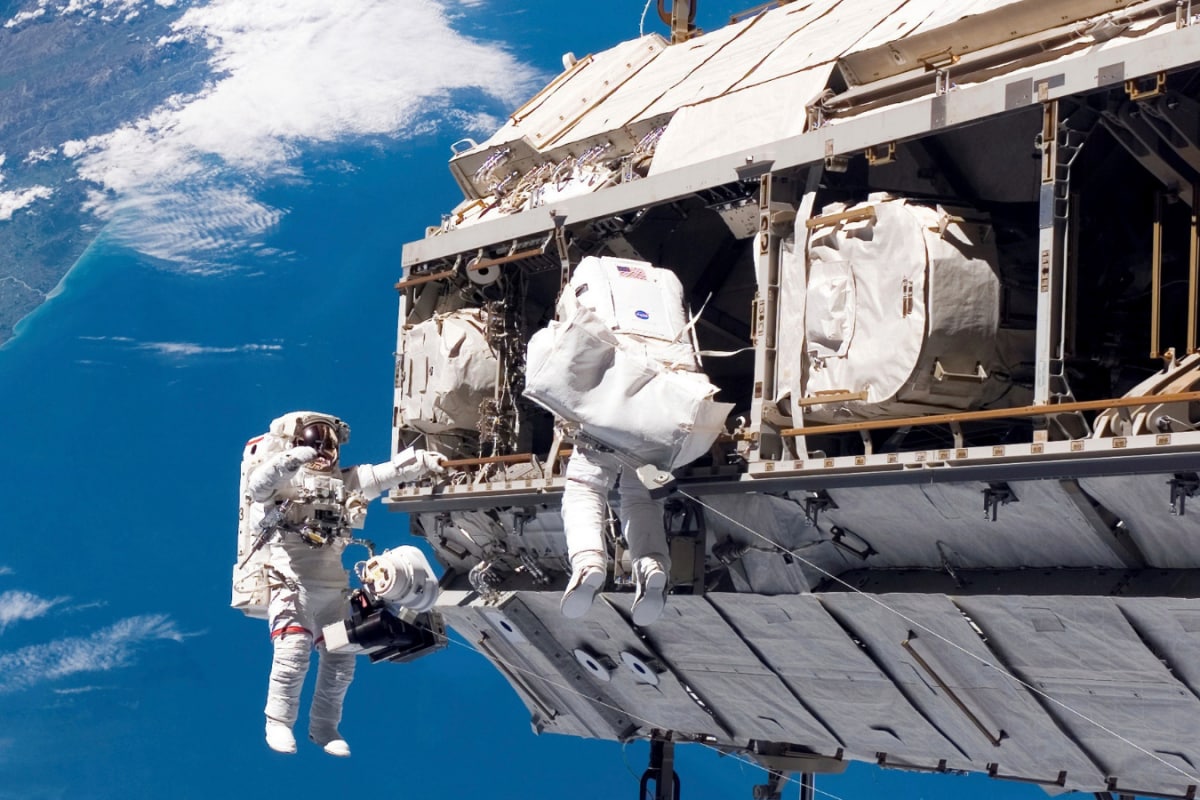

Astronauts on the International Space Station (ISS) face a unique challenge: how to secure a sustainable supply of potable water while orbiting hundreds of miles above Earth. Transporting water to space is incredibly expensive. The solution lies in an innovative and somewhat unappetizing process: recycling sweat and urine. Through a sophisticated system of filtration, distillation, and purification, the ISS effectively transforms wastewater into drinking water, achieving a remarkable water recovery rate.
The ISS employs a comprehensive Environmental Control and Life Support System (ECLSS) to manage its resources, including water. The ECLSS has three primary functions: water recovery, air revitalization, and oxygen generation. Within the ECLSS, the Water Recovery System (WRS) plays a crucial role in collecting and processing wastewater. This system comprises two main components: the Urine Processor Assembly (UPA) and the Water Processor Assembly (WPA).
The process begins with the UPA, which utilizes a low-pressure vacuum distillation process to recover water from urine. The UPA is designed to handle approximately 9 kg of urine per day, catering to the needs of a six-person crew. The urine is distilled, separating water from other components. However, this distillation process leaves behind a urine brine that still contains reclaimable water. To address this, a Brine Processor Assembly (BPA) was added to the system. The BPA uses a special membrane technology to extract the remaining wastewater from the brine. Warm, dry air is then blown over the brine, evaporating the water, which is subsequently collected by the station's water collection systems.
In parallel, the WRS collects other forms of wastewater, including moisture from the crew's breath and sweat, captured by advanced dehumidifiers. This water, along with the water recovered from the UPA and BPA, is then sent to the WPA. The WPA employs a multi-stage process to purify the water. First, it filters out gases and solid materials. Then, the water passes through a series of filter beds and a high-temperature catalytic reactor assembly, breaking down any remaining trace contaminants. Sensors continuously check the water purity, and any water that doesn't meet the stringent standards is reprocessed. Finally, iodine is added to the acceptable water to prevent microbial growth, and the water is stored, ready for the crew's consumption.
NASA’s ECLSS system recently demonstrated that it can recover 98% of the water that crews bring along at the start of a long journey. Before the BPA was added, the total water recovery rate was between 93 and 94%. Each crew member needs approximately one gallon of water per day for drinking, food preparation, and hygiene.
The water produced through this recycling process is not only safe to drink but is also, according to NASA, cleaner than what is typically available on Earth. While the idea of drinking recycled urine might seem unappealing, the extensive purification processes ensure that the final product is of exceptionally high quality. As Jill Williamson, ECLSS water subsystems manager, stated, "The crew is not drinking urine; they are drinking water that has been reclaimed, filtered, and cleaned such that it is cleaner than what we drink here on Earth."
The water recycling system on the ISS is crucial for long-duration space missions. By minimizing the need to transport water from Earth, the system reduces the cost and logistical challenges associated with space travel. This capability is particularly important for future missions to the Moon, Mars, and beyond, where resupply missions will be less frequent and more difficult. The technology and knowledge gained from operating the ISS water recycling system are invaluable for developing sustainable life support systems for these deep-space explorations.